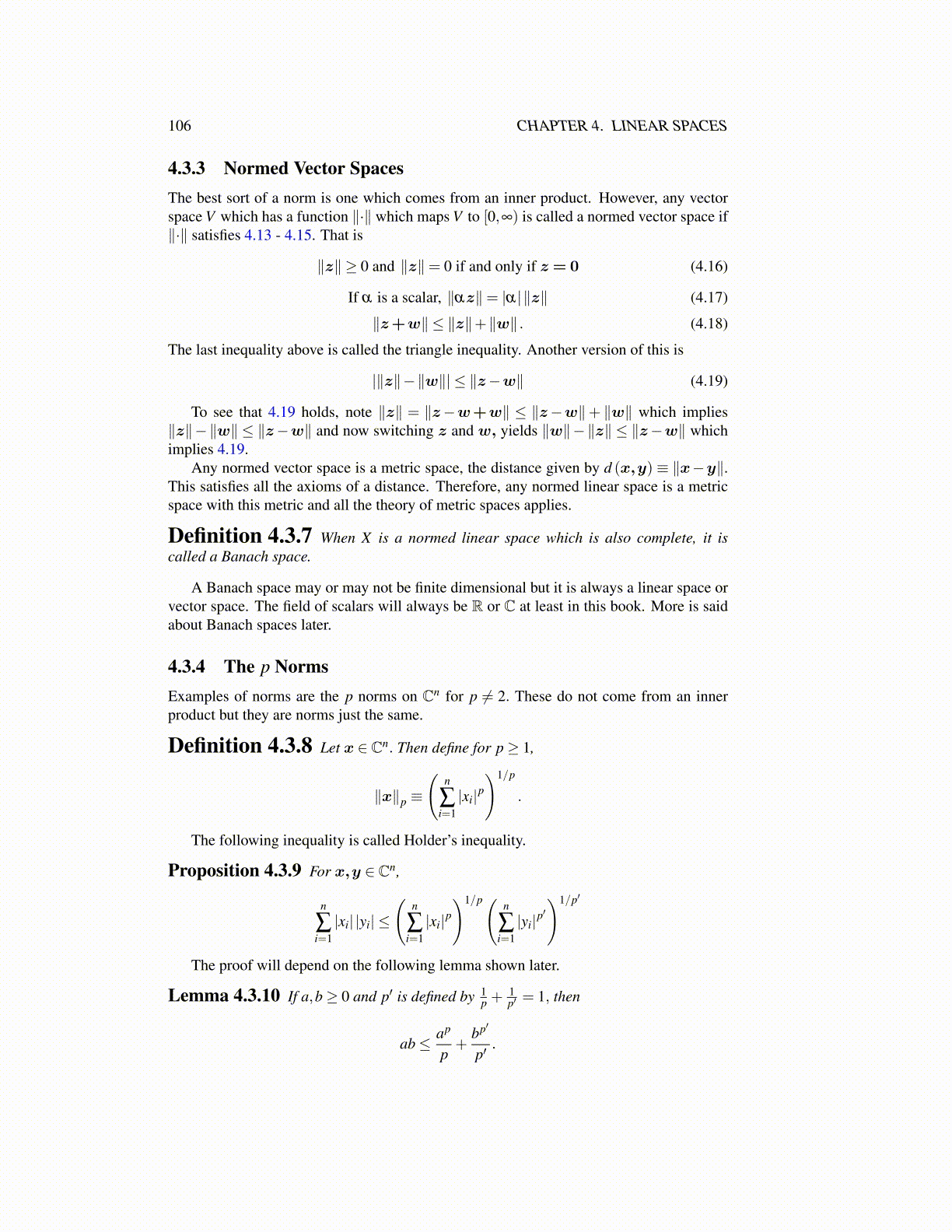
106 CHAPTER 4. LINEAR SPACES
4.3.3 Normed Vector SpacesThe best sort of a norm is one which comes from an inner product. However, any vectorspace V which has a function ∥·∥ which maps V to [0,∞) is called a normed vector space if∥·∥ satisfies 4.13 - 4.15. That is
∥z∥ ≥ 0 and ∥z∥= 0 if and only if z= 0 (4.16)
If α is a scalar, ∥αz∥= |α|∥z∥ (4.17)
∥z+w∥ ≤ ∥z∥+∥w∥ . (4.18)
The last inequality above is called the triangle inequality. Another version of this is
|∥z∥−∥w∥| ≤ ∥z−w∥ (4.19)
To see that 4.19 holds, note ∥z∥ = ∥z−w+w∥ ≤ ∥z−w∥+ ∥w∥ which implies∥z∥−∥w∥ ≤ ∥z−w∥ and now switching z and w, yields ∥w∥−∥z∥ ≤ ∥z−w∥ whichimplies 4.19.
Any normed vector space is a metric space, the distance given by d (x,y) ≡ ∥x−y∥.This satisfies all the axioms of a distance. Therefore, any normed linear space is a metricspace with this metric and all the theory of metric spaces applies.
Definition 4.3.7 When X is a normed linear space which is also complete, it iscalled a Banach space.
A Banach space may or may not be finite dimensional but it is always a linear space orvector space. The field of scalars will always be R or C at least in this book. More is saidabout Banach spaces later.
4.3.4 The p NormsExamples of norms are the p norms on Cn for p ̸= 2. These do not come from an innerproduct but they are norms just the same.
Definition 4.3.8 Let x ∈ Cn. Then define for p≥ 1,
∥x∥p ≡
(n
∑i=1|xi|p
)1/p
.
The following inequality is called Holder’s inequality.
Proposition 4.3.9 For x,y ∈ Cn,
n
∑i=1|xi| |yi| ≤
(n
∑i=1|xi|p
)1/p( n
∑i=1|yi|p
′)1/p′
The proof will depend on the following lemma shown later.
Lemma 4.3.10 If a,b≥ 0 and p′ is defined by 1p +
1p′ = 1, then
ab≤ ap
p+
bp′
p′.